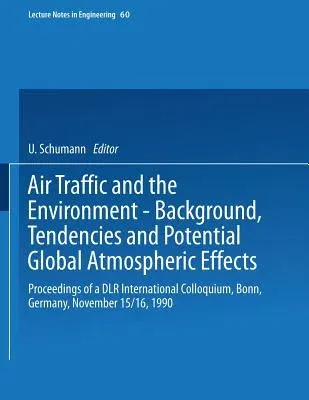The strong and continuing increase in airtraffic, the plans to build
supersonicair- craftsand hypersonicspace-transportsystems, the
developments ofhydrogentech- nology, andthe generalconcern
onglobalchangeshave raised questionson effects of emissions from air
traffic on the environment and especially the atmosphere aboveand
shortlybelowthe tropopause. What are the consequences of watervap- our
emissions on the formation of high clouds and global c1imate?What are
the possibleeffectsofemissions on the ozonelayerin the stratosphere and
uppertro- posphere?Which technological developments can help to
reducethe emissions? These questions get increasing attention in the
public. Some previous meetings of scientific experts have shown that the
topic is of high interest but most questions cannot be answered yet to
asufficientdegree. More research is necessaryand the topic requires
interdisciplinarycooperation. Moreover, there is a need to document the
basic knowledge required to assess possible consequences of increasing
and changingtraffic. With respect to possible global changes, airtraffic
at cruising alti- tude seemsto have the mostimportantinnuence and
itbecomes necessaryto con- sidertechnological alternatives. The German
Aerospace Research Establishment (DLR) has initiated aseries of seminars
on fundamental problems ofsciences inwhich DLR is envolved. Previous
seminarsconsidered: 1984 NonlinearDynamicsofTranscritical Flows 1985
UncertaintyandControl 1986 Artificial Intelligenceand
Man-Machine-Systems 1987 Parallel Computing in Science and Engineering
1988 HydrocarbonOxidation 1989 Optlmizatlon, Methods and Applications,
Possibilities andLimitations This bookcontainsten paperswhichhad been
preparedfor presentationatthe 1990 DLR-Seminaron AirTrafficand the
Environment- Background, Tendencies and Potential Global
AtmosphericEffects. At the seminar, an additional paper is to be
presented by Dr. Dieter H. Ehhalt.


